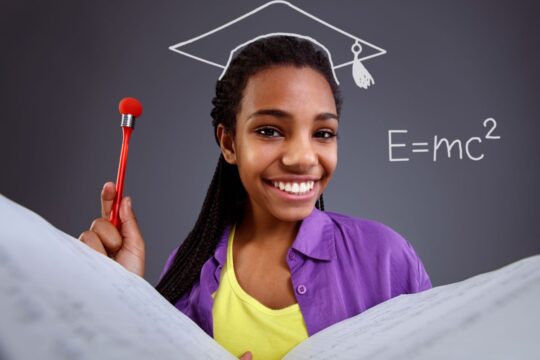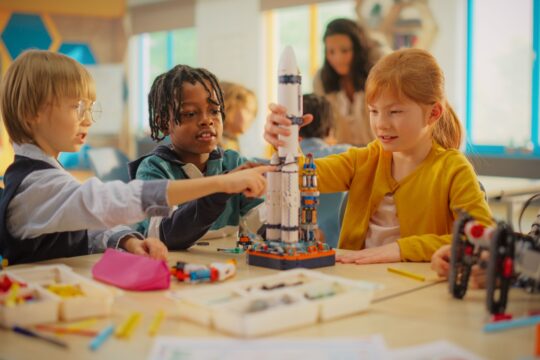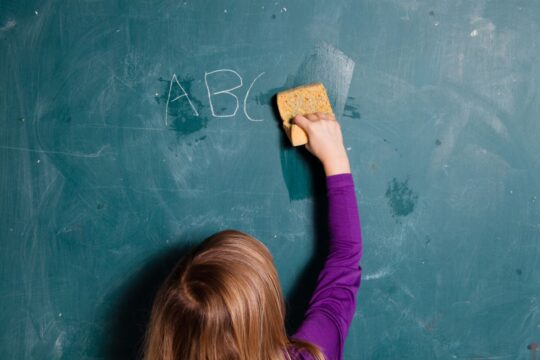There comes a time in every teacher’s career when those tried-and-true learning strategies that once worked no longer seem effective.
There could be several reasons for this—you might be teaching a new grade level, your students may not be as receptive, or the strategies just don’t feel as relevant anymore.
Whatever the reason, it’s a sign that it’s time to refresh your toolbox with new approaches. Here are a few tried-and-true active learning strategies to keep students engaged and learning.
Think-Pair-Share: A Simple Yet Powerful Tool
This strategy is a favorite among teachers who incorporate cooperative learning in their classrooms. It engages students individually, in pairs, and finally, as a whole group, ensuring that every student has a chance to process and share their thoughts.
How it works:
- The teacher poses a question and asks students to silently think about their answer.
- Students pair up and discuss their responses with a partner.
- The teacher selects a few pairs to share their thoughts with the whole class.
Why it works:
Think-Pair-Share can be used before a lesson to activate prior knowledge or at the end of a lesson to summarize learning. It encourages participation, helps students refine their ideas through discussion, and builds confidence in sharing with a larger group.
Real-World Scenarios: Making Learning Relevant
In today’s classrooms, helping students connect concepts to real-life situations is essential. This strategy encourages students to apply what they’re learning to real-world experiences, making abstract ideas more tangible.
How it works:
- The teacher presents a topic and asks students to connect it to a real-world situation.
- Students analyze how the concept applies to something they’ve experienced or may encounter in the future.
- Discussions, presentations, or written reflections help solidify these connections.
Why it works:
When students see how learning is relevant beyond the classroom, they’re more likely to engage and retain information. This strategy builds critical thinking and problem-solving skills that will serve them well in the workforce.
Reciprocal Questioning: Encouraging Deep Thinking
Reciprocal questioning teaches students to think critically and engage in deeper discussions while reading or analyzing content. It’s an excellent strategy for fostering metacognition—thinking about one’s own thinking.
How it works:
- The teacher provides question stems or prompts such as “Describe in your own words…” or “Why is this important?”
- Students work individually, with a partner, or in small groups to develop and answer questions based on the content.
- Discussions center around these student-generated questions, encouraging deeper engagement.
Why it works:
This strategy promotes critical thinking, comprehension, and active participation. However, for it to be successful, teachers need to carefully craft well-structured questions that guide students toward meaningful discussions.
Problem-Based Learning: Engaging Students as Problem Solvers
Much like real-world scenarios, problem-based learning challenges students to apply their knowledge to real-life situations. The key difference? Students don’t just connect concepts to real life, they work through an actual problem to find a solution.
How it works:
- The teacher presents a real-world problem related to the topic of study.
- Students analyze the problem, determine its root cause, and brainstorm potential solutions.
- They work collaboratively to develop and present their findings.
Why it works:
This strategy develops problem-solving skills, encourages teamwork, and helps students understand how their learning applies beyond the classroom. It also fosters resilience as students learn to navigate challenges and refine their approaches.
Inquiry-Based Learning: Let Students Take the Lead
Rather than providing answers, Inquiry-Based Learning encourages students to ask questions, investigate, and discover answers on their own.
How it works:
- Start with an open-ended question or problem related to the lesson.
- Allow students to research, explore, and discuss possible answers.
- Guide them as they analyze evidence and draw conclusions.
- Have students present their findings through discussions, presentations, or projects.
Why it works:
Inquiry-based learning builds curiosity, critical thinking, and problem-solving skills. It helps students take ownership of their learning rather than passively receiving information.
The Jigsaw Method: Collaborative Learning in Action
If you need a way to tackle a big topic without lecturing for the entire period, the Jigsaw Method is a lifesaver.
How it works:
- Divide a topic into smaller sections and assign each group one section to become an “expert” on.
- Students read, research, and discuss their assigned section.
- Groups then mix so that each new group has one expert from every section.
- Experts teach their portion to the new group so that by the end, everyone has learned the full topic.
Why it works:
This strategy builds student accountability, collaboration, and comprehension. Because students must teach what they’ve learned, they engage more deeply with the material.
Rotating Chairs: A Cooperative Discussion Strategy
If you’re looking for a structured way to promote thoughtful discussions, the Rotating Chairs strategy is an excellent option. It ensures that all students are actively listening and engaged in the conversation.
How it works:
- Students are divided into groups, and one student is designated as the lead speaker to start the discussion.
- When another student wants to speak, they raise their hand, and the lead speaker calls on them.
- Before adding their thoughts, the new speaker must briefly summarize what the previous speaker said.
- This pattern continues, with each new speaker summarizing before adding to the discussion.
- If a student wants to introduce a new discussion thread, they must first summarize everything that has been said so far.
Why it works:
This strategy builds listening and summarization skills while keeping discussions structured and inclusive.
Because students must process and repeat what they’ve heard before contributing, they develop stronger comprehension and communication skills.
Studies show that active learning strategies keep students engaged because they involve participation rather than passive absorption of information.
When students are actively involved, they tend to remember more, think deeper, and collaborate better with their peers.
Instead of relying on traditional classroom exercises, try incorporating one of these active learning strategies. They’ll not only keep students mindful and engaged but also help create a more dynamic, student-centered learning environment.
Educators never stop learning; check out our available graduate degree programs to hone your skills and promote lifelong learning and academic excellence.




